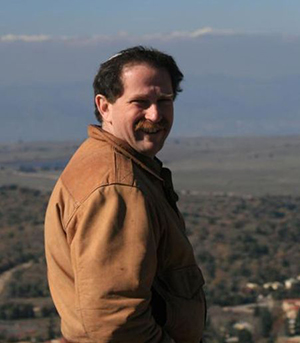Co-Housing: Taking Congregational Life to the Next Level
Temple Bnai Israel in Northeast Connecticut has been involved in a  “visioning process” for the last several years about how to “to formulate the best way to sustainably foster and serve the Jewish community in North East Connecticut (including the non-Jewish participants in that community) for the coming several decades.” We launched this process in response to the challenges Rabbi Schwarz presents in his introductory essay to Jewish Megatrends. We saw the national trends of changing attitudes toward ethnicity and religious institutions and we saw that, like all the congregations in Eastern Connecticut, our religious school was shrinking precipitously and our membership was slowly declining, despite considerable dynamism within the congregation. In a series of parlor meetings with both members and non-members, we discovered that participants in our community approached Judaism as a civilization, which accords with our Reconstructionist denominational affiliation. They wanted to be a part of a community, a kehilla, in which Jewish cultural, spiritual, and intellectual tools helped them live lives of mutual support and meaning, which includes contributing to the wellbeing of the larger community and world.
“visioning process” for the last several years about how to “to formulate the best way to sustainably foster and serve the Jewish community in North East Connecticut (including the non-Jewish participants in that community) for the coming several decades.” We launched this process in response to the challenges Rabbi Schwarz presents in his introductory essay to Jewish Megatrends. We saw the national trends of changing attitudes toward ethnicity and religious institutions and we saw that, like all the congregations in Eastern Connecticut, our religious school was shrinking precipitously and our membership was slowly declining, despite considerable dynamism within the congregation. In a series of parlor meetings with both members and non-members, we discovered that participants in our community approached Judaism as a civilization, which accords with our Reconstructionist denominational affiliation. They wanted to be a part of a community, a kehilla, in which Jewish cultural, spiritual, and intellectual tools helped them live lives of mutual support and meaning, which includes contributing to the wellbeing of the larger community and world.
While we haven’t yet finalized our decision about how to proceed, I’d like to describe one of the options under serious consideration. Rabbi Schwarz mentions co-housing in his section on kehilla. We’re looking at a hybrid model in which a co-housing community serves as the physical center of a larger Jewish community. A dozen or more households would live in the co-housing community and their common building would also be the “common building” of the whole Jewish community, where we davven, meditate, learn, have Shabbat dinner, share Jewish culture, and meet to plan tikkun olam actions. To give fair credit, the initial inspirations for this idea were Berkeley Moshav, a Jewish co-housing community in the making, and the Moishe Kavod House in Boston. The Moishe Kavod House, like all Moishe Houses, is a small residential community for Jewish young adults, that serves as a center for a much bigger community. In the case of Moishe Kavod in Boston, the larger community not only gathers occasionally at the house for Shabbat, holiday, or social events, but is organized for tikkun olam.
Co-housing is a form of housing that is meant to enhance community, while also respecting members’ needs for privacy and individuality. The physical layout generally puts cars literally on the periphery, as opposed to their (metaphorical) centering in suburbs and exurbs. In co-housing, community is at the center. Residents have their own homes, but share at least one meal a week and have common space and other tools and amenities that allow the houses to be smaller and reduce the need to accumulate underutilized ‘stuff.’ While co-housing is not a commune – everyone has private property and private lives, the community part of the lives of members is governed by the whole group through some variation of consensus decision-making. The co-housing movement is growing in the United States (about 165 current communities and almost that many in development) because it is a way to address the alienated loneliness of much of American culture, as well as a way to move away from environmentally unsustainable consumption.
We’re exploring this hybrid system of a co-housing community hosting a larger community/congregation (many co-housing communities have a little bit of this through associate memberships for people who want to eat with the community) because “one size doesn’t’ fit all.” Most of our members are happily ensconced in their current homes, and this allows us to build a new form of Jewish community without starting from scratch or destroying the “legacy institution.” At the very practical level, we expect that just as co-housing creates efficiencies through the members’ sharing communal space, etc., this hybrid co-housing + congregation will allow for efficiencies as the residents and the larger community share space.
More importantly, for the larger community, we expect that this project would immensely increase the dynamism of our community. Almost a hundred years ago, Mordecai Kaplan talked about the need for “organic community” in American Jewish life. A functioning “civilization” needs a community of people who are sufficiently interconnected to truly “build and be built” by it. We hope to establish such an organic community, where community/kehillah will create the structure in which Schwarz’ other propositions – the need for wisdom, social justice, and sacred purpose – can be met.
_____________
Rabbi Jeremy Schwartz, a graduate of the Reconstructionist Rabbinical College, has been spiritual leader of Temple Bnai Israel in Willimantic, CT since 2000.


